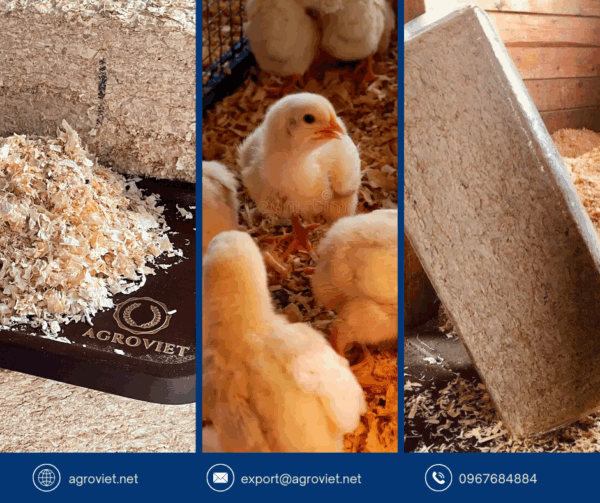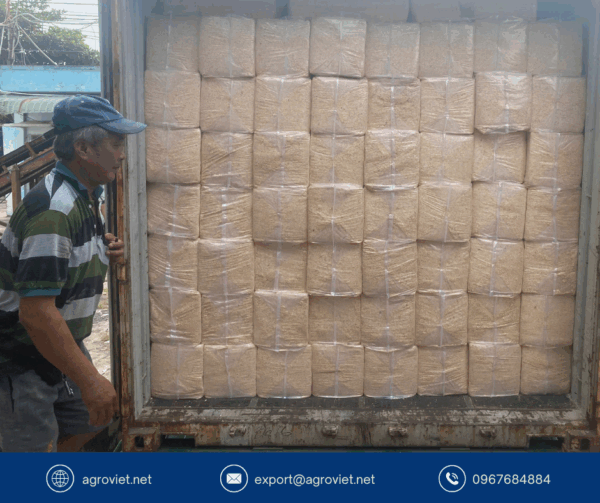The Role of Wood Shavings in Preventing Respiratory Diseases in Poultry: A Science-Based Approach
Introduction to Poultry  Respiratory Health
Respiratory Health
Respiratory diseases pose a significant threat to poultry health, leading to economic losses through reduced productivity, increased mortality, and costly treatments. Factors such as poor ventilation, wet litter, dust, and ammonia are major contributors to conditions like chronic respiratory disease (CRD), infectious bronchitis (IB), and aspergillosis. Using wood shavings as bedding is a proven strategy to mitigate these risks, maintaining a healthy environment for poultry. This post explores why wood shavings are essential for poultry litter management and how neglecting them can increase the risk of respiratory diseases.
The Threat of Respiratory Diseases in Poultry
Poultry are highly susceptible to respiratory infections due to their complex respiratory system, which includes lungs, air sacs, and hollow bones. Pathogens like Mycoplasma gallisepticum, Avian Infectious Bronchitis Virus (IBV), and Aspergillus fungi thrive in poorly managed environments, causing diseases that lead to coughing, sneezing, nasal discharge, and reduced egg production. According to research, respiratory diseases can result in morbidity rates of 10-20% and mortality rates of 5-10%, with even higher losses if infected birds are condemned. Without proper litter management, these risks escalate significantly.
Why Wood Shavings Are Critical for Poultry Health
Wood shavings are an ideal bedding material for poultry houses due to their excellent moisture absorption and aeration properties. Unlike straw or other materials, wood shavings maintain a dry litter environment, which is crucial for reducing ammonia production and preventing bacterial and fungal growth. Ammonia, a byproduct of manure decomposition, paralyzes the cilia in birds’ respiratory tracts, making them more vulnerable to infections. By keeping litter dry, wood shavings help maintain air quality and reduce the risk of diseases like CRD and aspergillosis.
Watch more: https://www.instagram.com/reel/DEDCjvTux8F/
How Wet Litter Contributes to Disease
Wet litter creates a breeding ground for pathogens. Excess moisture accelerates ammonia production, which irritates poultry respiratory systems and weakens their natural defenses. For example, Aspergillus fungi, commonly found in moldy bedding, can cause aspergillosis, leading to breathing difficulties and mortality rates as high as 50% in young birds. Wet litter also promotes the spread of Mycoplasma gallisepticum, which can persist in flocks and trigger CRD under stress. Using wood shavings ensures litter remains dry, significantly lowering these risks.
Benefits of Wood Shavings in Poultry Litter Management
-
Moisture Control: Wood shavings absorb moisture effectively, preventing wet litter conditions that foster pathogen growth.
-
Ammonia Reduction: Dry litter reduces ammonia volatilization, protecting birds’ respiratory health and improving air quality.
-
Pathogen Suppression: By maintaining a dry environment, wood shavings limit the growth of bacteria and fungi like Aspergillus.
-
Durability: Wood shavings resist compaction better than sawdust, ensuring consistent aeration and litter performance.
-
Cost-Effectiveness: Widely available and affordable, wood shavings are a practical choice for large-scale poultry operations.
The Risks of Neglecting Proper Bedding
Failing to use high-quality bedding like wood shavings can have severe consequences. Wet or contaminated litter increases ammonia levels, which impair the mucociliary escalator—a critical defense mechanism that clears mucus and pathogens from the respiratory tract. This leaves birds vulnerable to viral and bacterial infections, such as IB and fowl pox, which can spread rapidly through respiratory droplets or contaminated litter. Poor litter management also exacerbates stress, further weakening birds’ immunity and increasing morbidity and mortality rates.
Scientific Evidence Supporting Wood Shavings
Studies highlight the effectiveness of wood shavings in poultry health. Research from sources like Natural Remedy indicates that contaminated litter, including materials like straw or peat moss, is a common source of respiratory pathogens. Wood shavings, when sourced from untreated softwoods, reduce the risk of fungal contamination compared to mold-prone materials. Their coarse texture promotes aeration, preventing the anaerobic conditions that favor pathogen growth. Proper litter management with wood shavings can reduce ammonia emissions by up to 30%, directly lowering the incidence of respiratory diseases.
Practical Tips for Using Wood Shavings
To maximize the benefits of wood shavings, poultry farmers should follow these guidelines:
-
Use untreated softwood shavings, such as pine, to avoid chemical contamination.
-
Maintain a litter depth of 4-6 inches to ensure adequate moisture absorption.
-
Regularly turn or replace litter to prevent compaction and maintain dryness.
-
Monitor ammonia levels and use litter amendments, like lime, to enhance control.
-
Ensure proper ventilation to complement the aeration properties of wood shavings.
Environmental and Economic Impacts
Using wood shavings not only protects poultry health but also offers environmental and economic benefits. Dry litter reduces ammonia emissions, minimizing air and water pollution. Healthier birds exhibit better growth rates and egg production, improving farm profitability. Additionally, used wood shavings can be composted, providing a sustainable disposal option. Neglecting proper bedding, on the other hand, leads to higher treatment costs, reduced productivity, and potential flock losses, making wood shavings a cost-effective investment.
Addressing Common Challenges
While wood shavings are highly effective, farmers must address potential challenges. Dust from shavings can irritate birds’ respiratory systems if not managed properly. Using slightly coarser shavings and maintaining proper ventilation can mitigate this issue. Sourcing consistent, high-quality shavings is also critical, as contaminated or treated wood can introduce toxins. By partnering with reliable suppliers and implementing regular litter maintenance, farmers can overcome these challenges and ensure optimal flock health.
Complementary Strategies for Respiratory Health
In addition to using wood shavings, farmers should adopt comprehensive biosecurity measures to prevent respiratory diseases. Quarantining new birds, limiting human access to poultry areas, and vaccinating against viruses like IBV are essential steps. Proper coop cleaning and disinfection after an outbreak further reduce the risk of reinfection. Combining these practices with wood shavings creates a robust defense against respiratory pathogens, ensuring long-term flock health.
Conclusion
Wood shavings are a cornerstone of effective poultry litter management, playing a critical role in preventing respiratory diseases. Their ability to control moisture, reduce ammonia, and suppress pathogens makes them indispensable for maintaining healthy flocks. Neglecting proper bedding increases the risk of costly and deadly diseases like CRD, IB, and aspergillosis, which can devastate poultry operations. By prioritizing wood shavings and adopting best practices, farmers can protect their birds, enhance productivity, and contribute to sustainable poultry farming.
Read more: https://vietnambestwood.com/general/how-to-calculate-wood-shavings/
